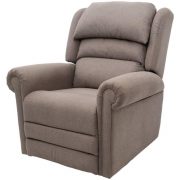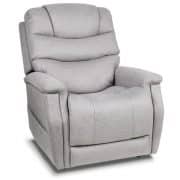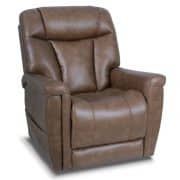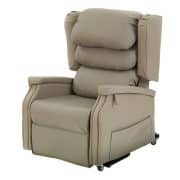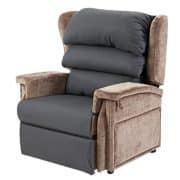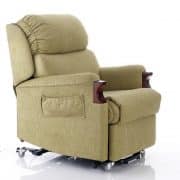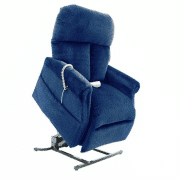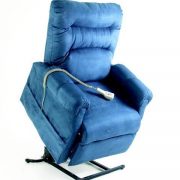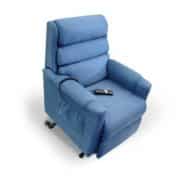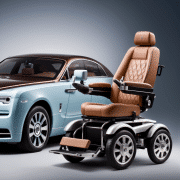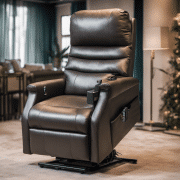How Do Lift Chairs Work?
In the realm of mobility aids, electric or power lift chairs stand as a beacon of support and comfort for individuals facing mobility challenges. These specialised power lift chairs, also known simply as lift chairs, are designed with a sole purpose – to aid those who find it difficult to transition between seated and standing...
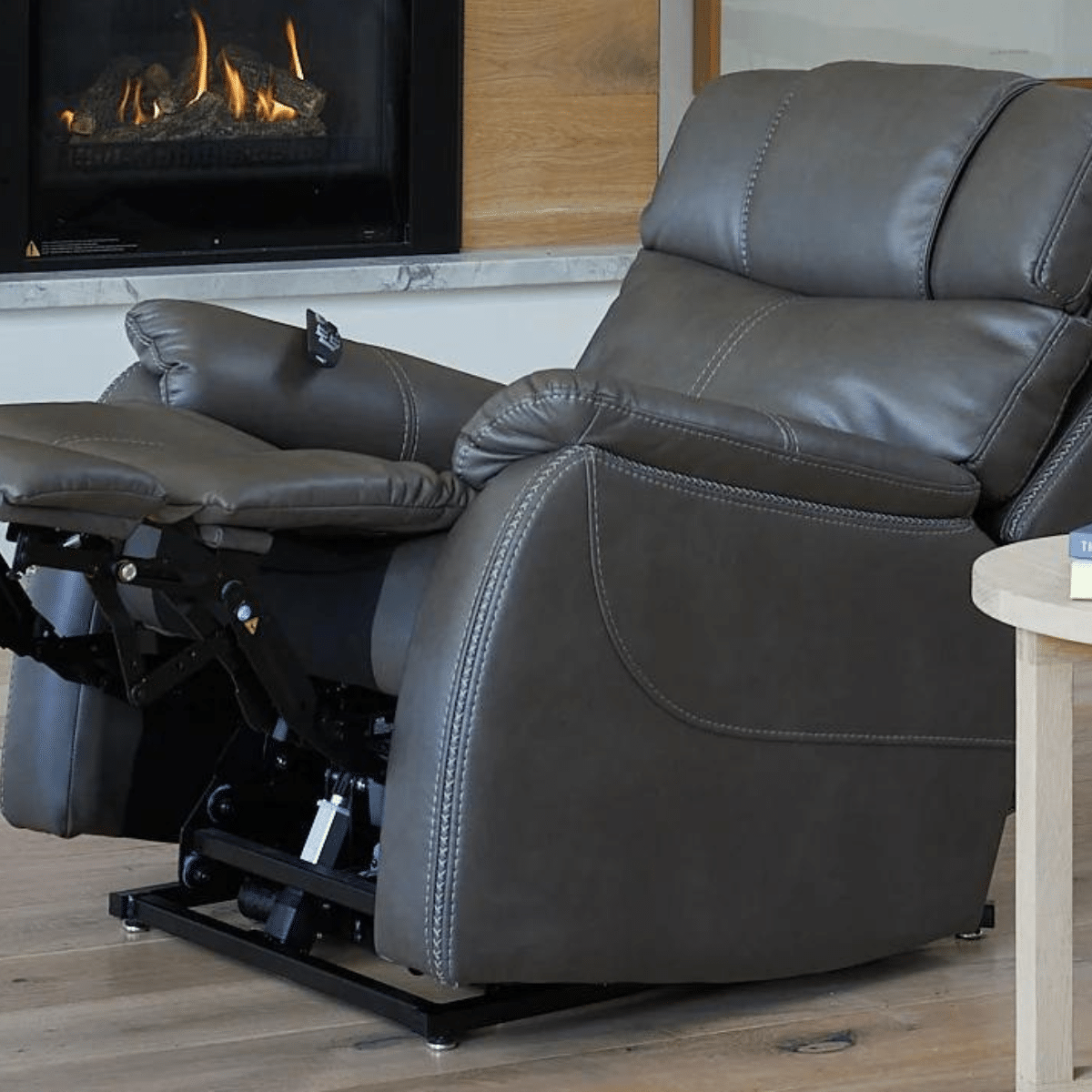
In the realm of mobility aids, electric or power lift chairs stand as a beacon of support and comfort for individuals facing mobility challenges. These specialised power lift chairs, also known simply as lift chairs, are designed with a sole purpose – to aid those who find it difficult to transition between seated and standing positions. Whether due to age-related ailments, muscle weakness, joint pain, arthritis, or mobility impairments, these chairs have become invaluable companions, offering a lifeline to independence and dignity. In this guide, we will explore how lift chairs operate, the main types, and how to use them safely and effectively.
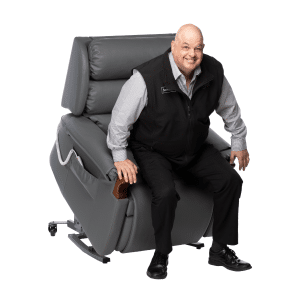
You might also be interested in 4 Reasons Why A Lift Chair is A Must for Elderly Independent Living; How slide sheets and transfer assist trolleys are improving patient and carer safety; Our Top 10 Picks for the Best Recliner Chairs
The Benefits of Lift Chairs: Your Gateway to Mobility and Comfort
These chairs are not your ordinary pieces of furniture; they are designed to elevate your seated experience. Let’s dive into the treasure trove of benefits they offer:
1. Assistance with Standing and Sitting: Lift chairs are like supportive hands that gently lift you up or ease you into a seated position. They’re especially handy for those dealing with muscle weakness, joint stiffness, balance challenges, or recovering from surgery involving the lower extremities.
2. Reduced Strain and Risk of Falls: By smoothly transitioning between sitting and standing, lift chairs reduce the strain on muscles and joints, reducing the chances of accidents and injuries. For seniors and those with limited mobility, this is a crucial safeguard against falls.
3. Enhanced Comfort and Support: Elevating your legs and feet can help reduce post-surgery swelling and improve circulation. Many lift chairs offer a variety of comfortable recline positions, providing respite for conditions like back pain or oedema.
4. Independence and Dignity: These chairs are champions of independence, allowing users to tackle daily activities with minimal help, preserving their dignity and self-sufficiency.
5. Customisation and Adaptability: Lift chairs come in various styles, sizes, and feature sets, letting users cherry-pick the perfect fit.

Several recliner lift chairs go beyond the basics, offering additional amenities such as cup holders, USB ports, and heat and massage functions to enhance your comfort. Thanks to heat-sensitive memory foam, some chairs adapt to the user’s body shape, ensuring optimal support and minimising pressure.
Furthermore, some recliner lift chairs come equipped with removable foam seats, making it convenient to use self-provided pressure cushions. This is particularly valuable for individuals who may be at risk of developing pressure injuries, especially those who rely on their lift chairs for extended periods.

Exploring Lift Chair Varieties: Understanding the Different Types
Let’s explore the main types of lift chairs available in the market. Each type offers different levels of adjustability and functionality, encompassing the diverse needs of individuals with mobility issues. Most lift chairs are available in a single or dual motor model. Here are the main types:
Two Position Lift Chairs
These chairs offer two primary positions: an upright seated position and an adjustable footrest function. Two position lift chairs are the most basic type of lift chair and are ideal for individuals who primarily require assistance with transitioning from sitting to standing and vice versa. They are simple, straightforward, and efficient.

Three Position Lift Chairs
Three position lift chairs provide three primary positions: an upright seated position for regular sitting, a slightly reclined position often referred to as the “TV-watching” position for relaxation, and a fully reclined position for napping or sleeping. These chairs are more versatile than their two-position counterparts, offering users additional recline options for enhanced comfort.

Infinite Position Lift Chairs
Infinite position lift chairs take versatility to the next level. They provide multiple recline angles and can often be adjusted to a nearly or completely flat sleeping position. This type of lift chair offers the highest level of customisation in terms of recline angles, catering to individuals with specific comfort requirements or various health conditions.

Zero Gravity Lift Chairs
Zero-gravity lift chairs are a category of their own, posing a unique feature where the lift chair can recline into a “zero-gravity” position where the feet and lower legs are raised above the heart. In this position, the user’s body weight is evenly distributed, reducing pressure on the spine and creating a sensation of weightlessness. These chairs are particularly beneficial for individuals with back pain, circulation issues, or other health concerns.

Remember, within each category, there’s a world of options in terms of size, weight capacity, upholstery, and extra features. So, when choosing a lift chair, factor in your unique needs and preferences.
Decoding the Lift Chair’s Inner Workings: How Does a Lift Chair Work?
A lift chair consists of several essential components that work seamlessly together to provide comfort and assistance to users with mobility challenges.
Frame
The frame is the backbone, offering stability and housing all the mechanical marvels that make the lift chair tick.
Backrest
Padded for your comfort and adjustable to various recline angles, the backrest is a game-changer, especially for those with conditions like kyphosis or scoliosis.

Seat
The seat, soft and cushy, serves as the launchpad for the lifting mechanism.
Armrests
These provide a comfortable resting place for your arms and are often seamlessly integrated into the lift chair’s design. Some chairs feature dropdown armrests to make transitioning to other surfaces like wheelchairs a breeze.

Lifting Mechanism
The heart of the lift chair, this intricate mechanism works tirelessly to help you move from a seated to a standing position and back again.
Lift Frame
The lift frame is connected to both the seat and the base of the lift chair. Its purpose is to move vertically, tilting, lifting, and lowering the seat as needed.

Electric Motor
This powerhouse, nestled within the frame, is the muscle behind the lifting mechanism, ensuring everything runs smoothly.
Scissor Mechanism
These components work in tandem to lift and lower the seat with grace, thanks to linked metal bars that expand and contract like a pair of scissors.
Control Panel or Remote
Your trusty sidekick, this panel or remote control allows you to adjust the chair’s position easily, guaranteeing a customised and comfy experience.

Mastering the Art of Lift Chair Usage: Safety First!
To make the most of your lift chair while staying safe, here are some important guidelines to follow:
Lift Chair Placement
Lift recline chairs usually move backward when reclining, so keep them away from walls or other furniture. If you have a Wall-Hugger model, a tiny 15 cm gap between the lift chair and the wall is all you need.
Getting In and Out Safely
To rise, simply press the button, and the lift chair will gradually lift you into a standing position. The seat will tilt forward while rising to facilitate your exit. When it’s time to sit down, position yourself on the elevated seat and use the button to slowly lower it. Remember to maintain your grip on the armrests throughout this process.
Operating the Chair
Whether you have built-in controls or have a simple or multi-button remote, use them to initiate the lift or recline functions.
Recline and Footrest
Adjust the electric lift chair’s recliner and footrest functions for added comfort, using the controls to find your preferred position.
Maintenance and Care
Regularly clean the lift chair, inspect the electrical components, and address any issues promptly to ensure longevity and safe operation.

Navigating Lift Chair Issues: Common Problems and Solutions
Like any mechanical device, rise recliner lift chairs may encounter a hiccup or two from time to time. Here’s how to troubleshoot common issues:
Chair Doesn’t Lift
Check the power supply, connections, and remote-control batteries. Make sure the chair is not obstructed.
Unusual Noises
If your chair starts sounding like a symphony of squeaks, it might need lubrication or have mechanical issues. Lubricate moving parts and look for loose components or reach out to the supplier or manufacturer.
Uneven or Inconsistent Lifting or Reclining
Ensure the power lift recliner chair is on a level surface and look for obstructions or damaged parts. If issues persist, it could be a motor or mechanical component problem.
Electrical Woes
Watch out for any electrical problems such as, the electric lift chair not responding to the remote control or experiencing intermittent power loss. If the electrical plug or cord is not the culprit and changing the batteries doesn’t help, it’s time to reach out to the supplier or manufacturer.
Upholstery Dilemmas
Follow the manufacturer’s recommendations for addressing stains or tears. Keep a watchful eye on upholstery conditions and address issues promptly.
Remote Control Troubles
If your recline chair is not responding to your remote, start with new batteries. If that doesn’t solve it, contact the manufacturer for assistance.

Regular maintenance, safe operation, and prompt attention to any issues that arise are crucial to ensure the longevity and functionality of your rise recline lift chair. If you encounter persistent problems or issues, it’s advisable to contact the manufacturer or a professional technician for repairs or maintenance.
Elevating Comfort and Independence
In summary, electric lift chairs aren’t just furniture; they’re bridges to a life lived with greater ease and independence. They empower individuals with mobility challenges to navigate their world comfortably, safely, and with a touch of luxury. Understanding how the different lift chairs work, the diverse types available, and how to use them correctly ensures they remain steadfast companions on the journey to enhanced mobility and comfort. So, go ahead, test a few lift chairs, and elevate your comfort and independence with the magic of lift chairs!

Preferred Suppliers for the Healthcare Industry Since 2003
Patient Handling is founded on a sound base of great staff, great products and great partners. We strive to put our clients needs above all else and focus on well thought out solutions for complex needs.



Receive latest news
Contact Us
We are an online store only. Please contact us if you would like a product specialist to assist with your purchase.





